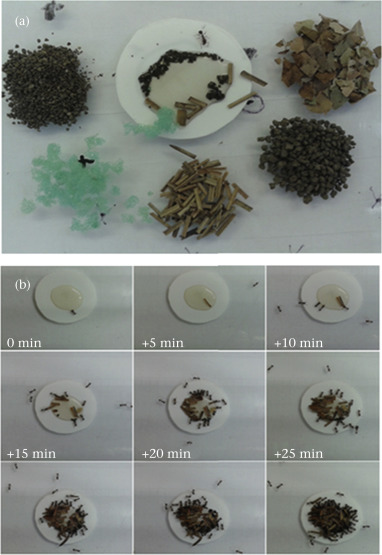In an exciting new study recently available online in the journal Animal Behaviour, researchers found that two species of ants are selective in their use of tools for liquid food transport. Although tool use in ants has already established in previous studies, the mechanisms involved in tool use selection have rarely been investigated. Dr. István Maák and colleagues found that ants exhibit selective behavior in tool use, preferring materials that exhibit optimal handling and/or soaking properties. Perhaps most intriguing, the ants learned to preferentially use artificial tools that have superior properties for liquid food transport when compared to tools in their natural environment.

The ants in question are two species in the widespread genus Aphaenogaster, A.subterranean and A. senilis. These species, along with other Aphaenogaster species, lack a distensible crop, limiting the amount of food that workers are able to carry internally. This limitation may have promoted the evolution of tool use, which allows workers to more efficiently transport food. In particular, these ants place debris into liquid food sources, and then carry the soaked debris back to their nest.
To test for tool selectivity, Dr. Maák and colleagues designed a clever experiment where they offered a liquid food source and several different types of tools for use by the ants. Then, they documented the number and type of tools transported to and from the nest over a period of 3 hours. Using statistical analyses, the researchers then compared the number of tools used in order to determine any preferences in tool use.

In the end, the study authors found that despite having a variety of tools from which to choose, the ants preferentially used certain tools, including artificial ones that they could not have previously experienced in nature. This demonstrates that the ants are flexible in their tools use and will adjust their behavior in response to new materials that they discover. Such behavioral flexibility, if widespread across different species, may contribute to the ecological success of ants seen in many terrestrial ecosystems around the world.
